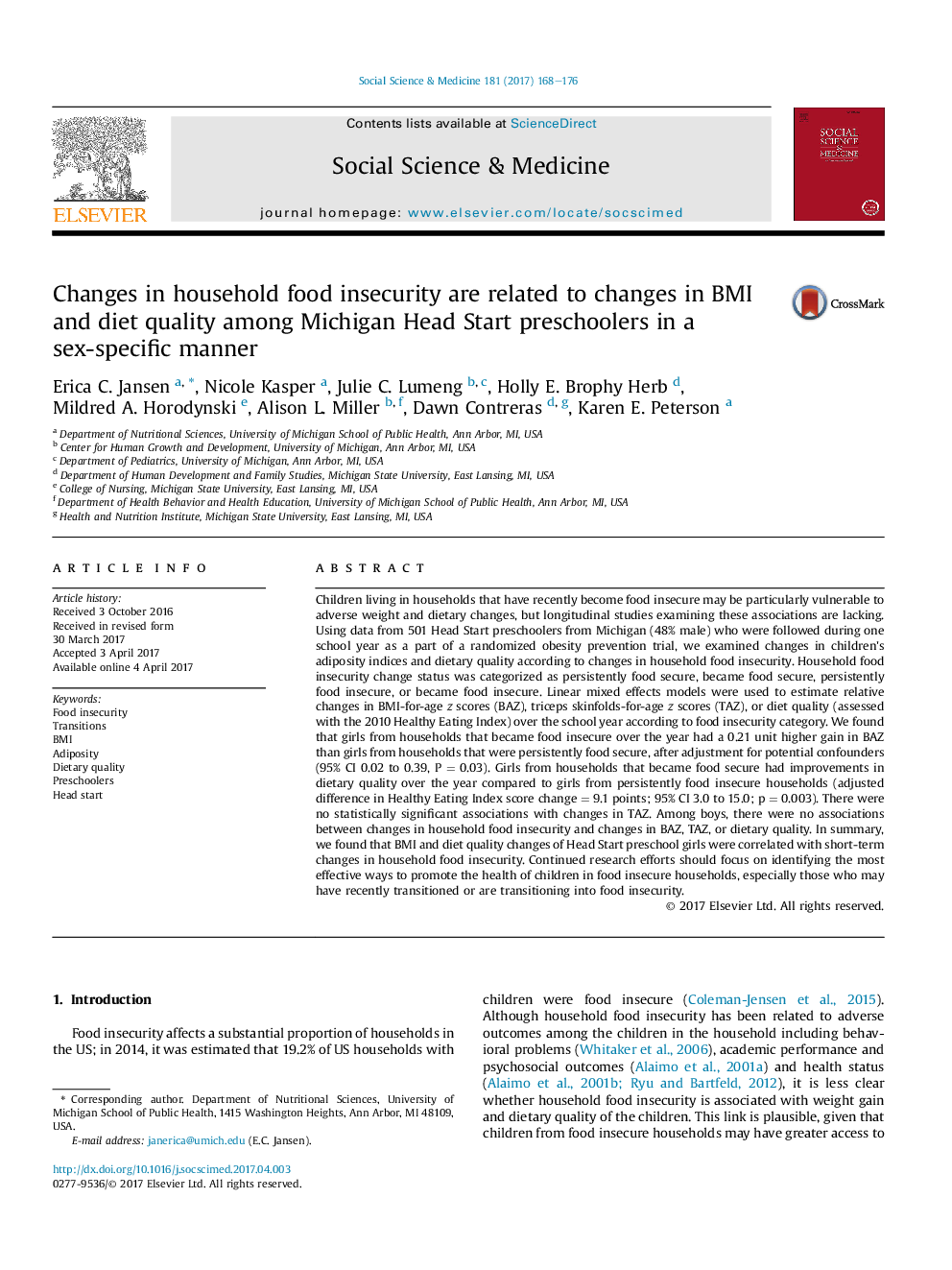| کد مقاله | کد نشریه | سال انتشار | مقاله انگلیسی | نسخه تمام متن |
|---|---|---|---|---|
| 5046610 | 1475988 | 2017 | 9 صفحه PDF | دانلود رایگان |

• Transitions into food insecurity were related to higher BMI gain among girls.
• Girls in households that became food secure had relative diet quality improvements.
• Food insecurity transitions did not correlate with BMI or dietary quality among boys.
Children living in households that have recently become food insecure may be particularly vulnerable to adverse weight and dietary changes, but longitudinal studies examining these associations are lacking. Using data from 501 Head Start preschoolers from Michigan (48% male) who were followed during one school year as a part of a randomized obesity prevention trial, we examined changes in children's adiposity indices and dietary quality according to changes in household food insecurity. Household food insecurity change status was categorized as persistently food secure, became food secure, persistently food insecure, or became food insecure. Linear mixed effects models were used to estimate relative changes in BMI-for-age z scores (BAZ), triceps skinfolds-for-age z scores (TAZ), or diet quality (assessed with the 2010 Healthy Eating Index) over the school year according to food insecurity category. We found that girls from households that became food insecure over the year had a 0.21 unit higher gain in BAZ than girls from households that were persistently food secure, after adjustment for potential confounders (95% CI 0.02 to 0.39, P = 0.03). Girls from households that became food secure had improvements in dietary quality over the year compared to girls from persistently food insecure households (adjusted difference in Healthy Eating Index score change = 9.1 points; 95% CI 3.0 to 15.0; p = 0.003). There were no statistically significant associations with changes in TAZ. Among boys, there were no associations between changes in household food insecurity and changes in BAZ, TAZ, or dietary quality. In summary, we found that BMI and diet quality changes of Head Start preschool girls were correlated with short-term changes in household food insecurity. Continued research efforts should focus on identifying the most effective ways to promote the health of children in food insecure households, especially those who may have recently transitioned or are transitioning into food insecurity.
Journal: Social Science & Medicine - Volume 181, May 2017, Pages 168–176